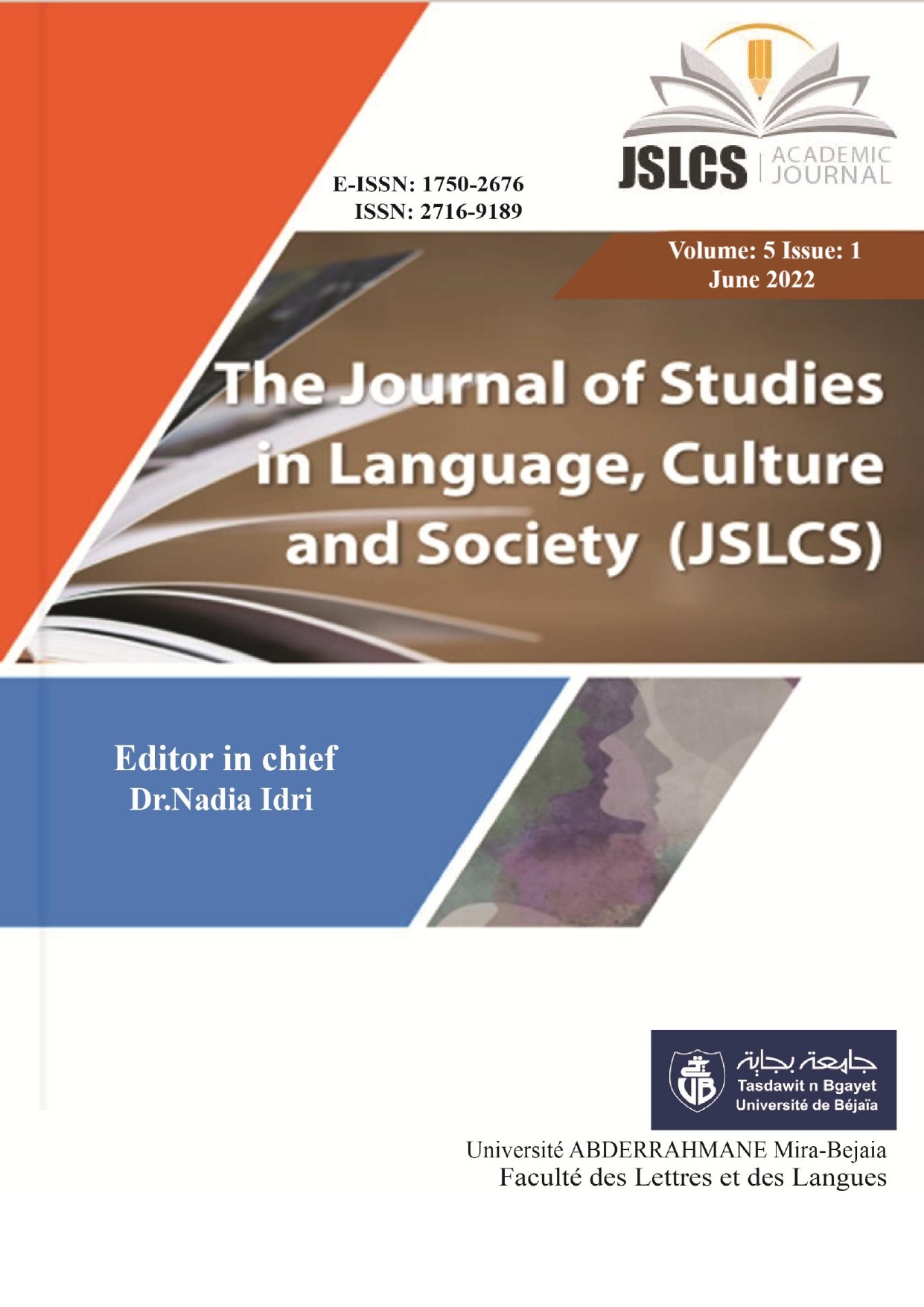Intercultural Inquiry With Pre-service Efl Teachers
Keywords:
Cultures, Foreign language teaching, Intercultural competence, Intercultural education, Pre-service teachersAbstract
Cultural extension in the intercultural digital era has amplified the importance of effective interpersonal communication among culturally different interlocutors, and this mainly aims to evade misunderstanding that may eventually lead to conflict. Indeed, professionals, businessmen and even ordinary people work to develop long-term economic, social and cultural relations with other cultural groups, yet global instability still threatens the world. Therefore, strengthening the skills required to encounter intercultural connections is becoming increasingly important at all levels, especially in education. Language educators are called upon to help learners assess their cultural and social differences and practices as community members. They are also required to guide students to accept and value otherness. In this sense, language educators should promote reflective environments where students can reflect upon culture and cultural diversity; they need to be open-minded and neutral agents who construct cultural experiences with students. Accordingly, this paper evaluates our ELT pre-service teachers’ readiness, as would be teachers, to develop their learners’ intercultural competences. To conduct this research study, the researchers used questionnaires as a primary tool to collect relevant data from 35 ELT pre-service teachers at Oran Higher School of Teachers. In a nutshell, this study highlights the importance of intercultural competence for teachers and learners in the age of globalization and diversity.
References
Bennett, M. J. (2009). Defining, measuring, and facilitating intercultural learning: A conceptual introduction to the intercultural education double supplement. Intercultural Education, 20(4), 1–13. https://www.researchgate.net/publication/249003189_Defining_Measuring_and_Facilitating_Intercultural_Learning_A_Conceptual_Introduction_to_the_Intercultural_E ducation_Double_Supplement
Byram, M.M., & Feng, A.(2004). Culture and language learning: Teaching, research and scholarship. Language Teaching, 37(3), 149 - 168. https://dro.dur.ac.uk/1701/1/1701.pdf
Byram, M. M., Gribkova, B., & Starkey, H. (2002).Developing the intercultural dimension in language teaching: A practical introduction for teacher. In Council of Europe (Eds.). https://rm.coe.int/16802fc1c3
Deardorff, D. K. (2006). Identification and assessment of intercultural competence as a student outcome of internationalization. Journal of Studies in International Education, 10(3), 241–66. https://www.mccc.edu/~lyncha/documents/DeardorffidentificationandassessmentofinterculturalcompetenceasanoutcomeofInternationaliza t.pdf
Kitsantas, A. (2004). Studying abroad: The role of college students’ goals on the development of cross-cultural skills and global understanding. College Student Journal, 38(3), 441–52.
https://www.thefreelibrary.com/Studying+abroad%3A+the+role+of+college+student s%27+goals+on+the...-a0123321904
Kitsantas, A., & Meyers, J. (2001). Studying abroad: Does it enhance college student crosscultural awareness. Paper presented at the annual meeting of the San Diego State University and the US Department of Education Centers for International Business
Education and Research. https://files.eric.ed.gov/fulltext/ED456648.pdf
Kinginger, C., Alison, G. H., & Simpson, V. (1999). A tele-collaborative course on FrenchAmerican intercultural communication. The French Review, 72(5), 853–66. https://ur.booksc.eu/book/46619608/77e417
Mackey, A., & Gass, S. M. (2005). Second language research: Methodology and design. Lawrence Erlbaum Associates Publishers.
https://www.manaraa.com/upload/8be2a1cf-6275-4941-971c-ae6446630635.pdf
Mendenhall, M. E., Stahl, G. K., Ehnert, I., Oddou, G., Osland, J. S., & Kuhlmann, T. M.(2004). Evaluation studies of cross-cultural training programs. In Landis, D., Bennett, J.M., & Bennett, M. J (Ed.), Handbook of intercultural training (pp. 129–43).Thousand Oaks, 35CA: Sage. https://books.google.dz/books?hl=fr&lr=&id=f0c5DQAAQBAJ&oi=fnd&pg=PT14
&dq=Evaluation+studies+of+crosscultural+training+programs&ots=mlleg_yzgA&sig=DRmbwoWYI6PnlY_MZAPg0 wvc_as&redir_esc=y#v=onepage&q=Evaluation%20studies%20of%20crosscultural%20training%20programs&f=false
Olson, C. L., & Kroeger, K. R. ( 2001). Global competency and intercultural sensitivity. Journal of Studies in International Education, 5(2), 116–37.
https://www.researchgate.net/publication/249632095_Global_Competency_and_Inte rcultural_Sensitivity
Paige, M. R. (1993). On the nature of intercultural experiences and intercultural education. In Paige,M.R (Ed.), Education for the intercultural experience (pp. 1-20). Intercultural Press. https://www.scribd.com/document/394708856/Paige-1993-Nature-of-theintercultural-experience-pdf
Perry, L., & Southwell, L. (2011). Developing intercultural understanding and skills: Models and approaches. Intercultural Education, 2(6), 453–466.
https://www.researchgate.net/publication/241715245_Developing_Intercultural_Und erstanding_and_Skills_Models_and_Approaches
Talkington, B., Lengel, L., & Byram, M.M (2004). Setting the context, highlighting the importance: Reflections on interculturality and pedagogy. https://www.llas.ac.uk/resources/paper/2048








